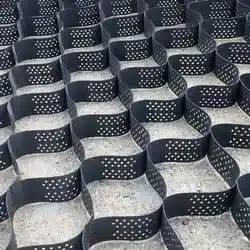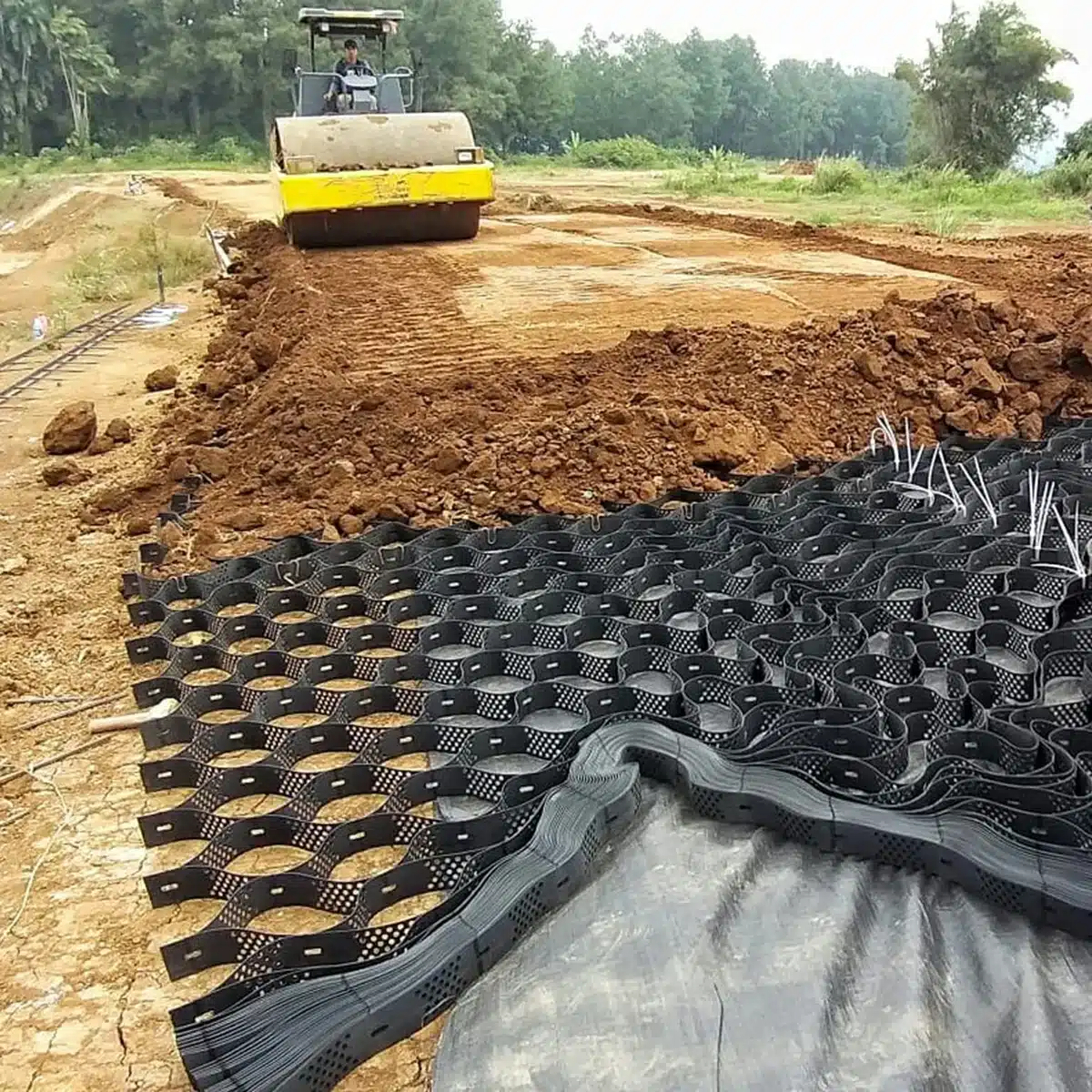+86-159 9860 6917
info@geofantex.com
geofantex@gmail.com
+86-400-8266163-44899
Geocell for gravel stands as an innovative solution revolutionizing the stability and longevity of gravel-based projects. Geocells, often referred to as cellular confinement systems, are three-dimensional honeycomb-like structures that provide reinforcement and stability to various materials, particularly gravel. This advanced geosynthetic material effectively confines and reinforces gravel, offering unparalleled support to load-bearing surfaces. The integration of geocells not only prevents gravel migration but also distributes weight evenly, mitigating erosion and enhancing structural integrity. With its flexible yet robust design, geocell technology ensures superior stability in various applications, from road construction and erosion control to landscaping and slope protection. Embracing geocell for gravel transforms conventional installations into durable, long-lasting solutions, elevating performance and sustainability across diverse project landscapes.

Are gravel grids worth it?
Absolutely! Gravel grids, utilizing geocells, are definitely worth the investment for a strong, durable driveway surface that costs less and lasts longer! These grids deliver a multitude of benefits that remain highly worthwhile. They ensure unparalleled stability, preventing gravel migration while significantly reducing surface erosion and bolstering load-bearing capacity. By evenly distributing weight, they effectively minimize rutting and pothole formation, resulting in a more resilient and visually appealing gravel surface. Additionally, their low maintenance requirements render them a cost-effective, long-term solution.
What do you fill geocell with?
Geocells serve as containers filled with gravel, sand, rock, and soil or similar aggregates. The interconnected design of these cells effectively secures the content, forming a robust matrix that prevents displacement. When selecting materials for filling the geocells, considerations revolve around the intended purpose, taking into account factors such as size, shape, and durability. Typically, angular gravel with well-graded particles stands out as the recommended choice to ensure optimal interlocking within the geocell structure.
What is Geocell used for?
Geocells find multifaceted applications in civil engineering, construction, and environmental projects, serving diverse purposes such as reducing erosion, stabilizing soil, protecting channels, and providing structural reinforcement for load support and earth retention. These versatile tools play pivotal roles in various applications:
- Soil Stabilization: Geocells reinforce and stabilize soil in areas prone to erosion, landslides, or uneven terrain. They provide structural support to prevent soil movement and retain slopes.
- Road Construction: They’re employed in building roads, highways, and pavements by confining and reinforcing materials like gravel, aggregates, or soil, enhancing load-bearing capacity and durability.
- Erosion Control: Geocells help control erosion on slopes, riverbanks, and shorelines by preventing soil displacement and promoting vegetation growth.
- Retaining Walls: They’re utilized in creating retaining walls or embankments, offering support and stability to prevent soil or rock collapse.
- Landscaping: Geocells aid in landscaping projects by stabilizing surfaces for walkways, driveways, and parking areas, improving load distribution and longevity.
Do I need geotextile under gravel?
Incorporating geotextile fabric beneath gravel hinges on several factors, including soil type, drainage needs, and the intended application of the gravel surface. Geotextile fabric offers high tensile strength, ensuring it effectively stabilizes the initial layer of gravel placed atop it. This fabric acts as a crucial separation layer, averting the mingling of gravel with the underlying soil, curbing weed growth, and assisting in efficient drainage. Although not obligatory, leveraging geotextile fabric can notably boost the gravel surface’s performance and lifespan, particularly in regions susceptible to inadequate drainage or soil contamination.

In conclusion, the integration of geocells for gravel applications offers an array of advantages, from enhanced stability and load-bearing capacity to reduced maintenance needs. These innovative systems are instrumental in creating robust and long-lasting gravel surfaces across a spectrum of construction and landscaping projects. Embracing geocells for gravel not only ensures structural integrity but also contributes to sustainable and resilient infrastructure development.



Get Free Sample
We’ll respond as soon as possible(within 12 hours)






















